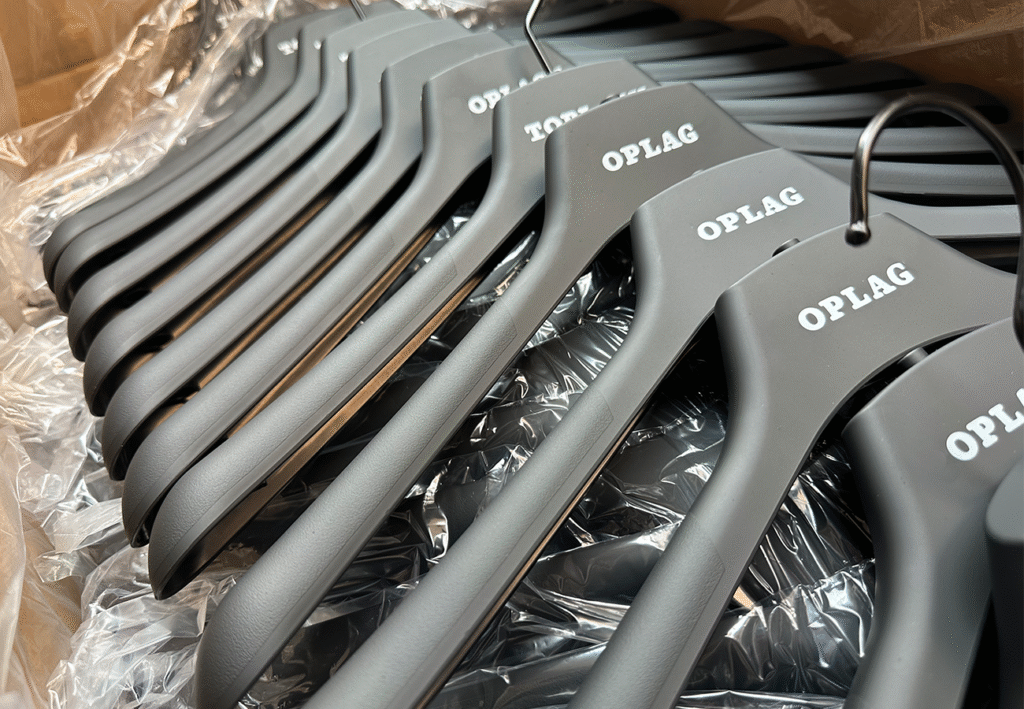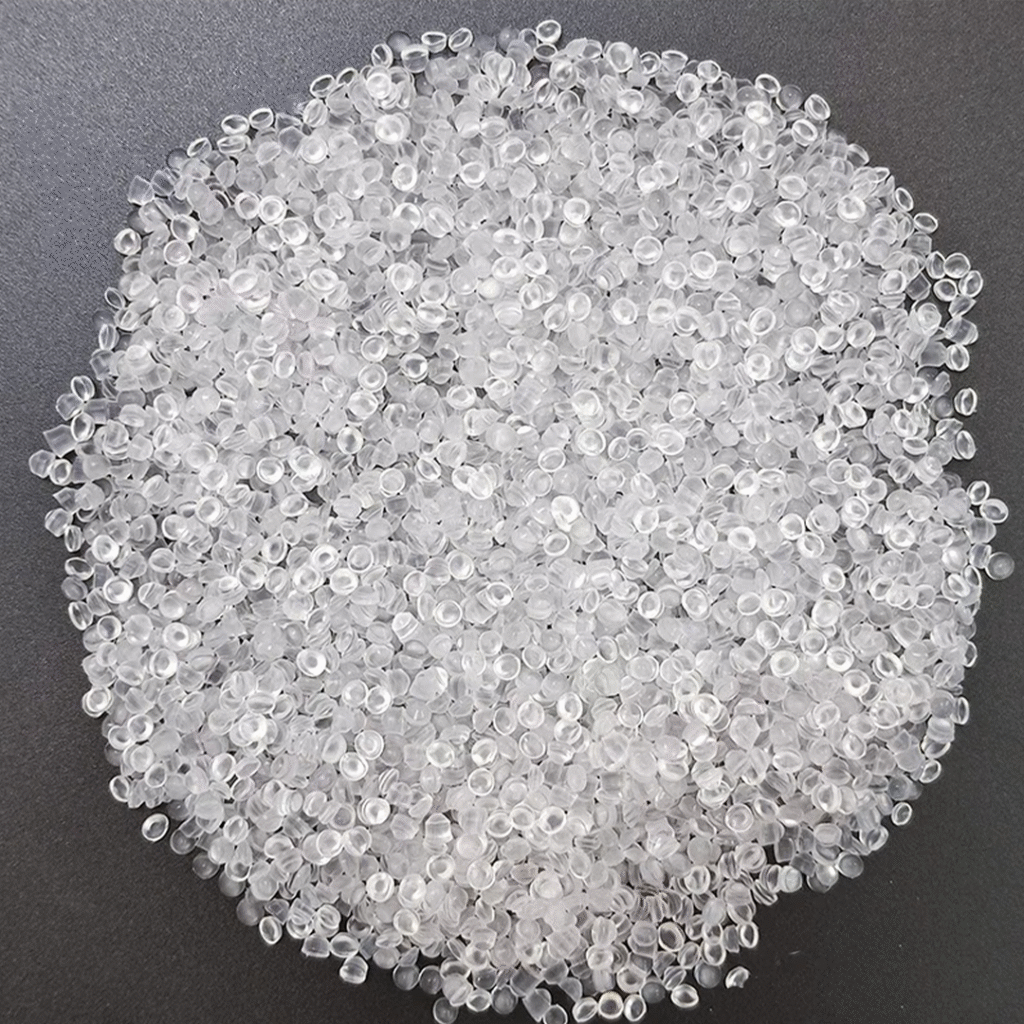Plastic Hangers Complete Guide
I’ve had so many fashion brands come to me saying, “We picked plastic hangers and they’re a disaster”—either the PS plastic hanger snapped under a sweater, or the PP plastic hanger let their silk tops slide to the floor. Plastic hangers aren’t just “cheap alternatives” to wood—they work if you pick the right type for your clothes.
This guide sticks strictly to plastic (no wood detours) and breaks down everything you need: from PP vs. PS vs. ABS to when an Acrylic hanger makes sense. No jargon—just what I’ve learned from helping brands fix their hanger headaches.

1. The 4 Plastic Hanger Types You Need to Know (And When to Use Each)
Not all plastic is the same. Here’s how to match each type to your garments—with real client examples:
PP Plastic Hanger: The “everyday workhorse.” Lightweight (about 25-30g) but tough, it handles 6-8 lbs—perfect for t-shirts, casual dresses, or kids’ clothes. A fast-fashion client of mine uses PP plastic hangers for their basics line, and they’ve cut hanger replacements by 35% (PP doesn’t crack in cold shipping like cheaper plastics). It’s also moisture-resistant—great if you ship to Southeast Asia or other humid markets. Just don’t use it for heavy coats—PP bends under 10+ lbs.
PS Plastic Hanger: The “clear display star.” Transparent or semi-transparent, it lets your clothes be the focus—ideal for lingerie, delicate blouses, or retail store displays. One lingerie brand switched to PS plastic hangers, and their customers started commenting on how “clean” the displays looked (no clunky hanger distracting from the fabric). The catch? PS is brittle—avoid it for heavy items (it snaps easily) or freezing shipping temps.
ABS Plastic Hanger: The “heavy-duty hero.” Denser than PP or PS, it holds 10-12 lbs—made for winter coats, thick sweaters, or men’s jackets. A outerwear brand used to struggle with broken hangers until they switched to ABS plastic hangers; now they have zero complaints. It’s also more durable for boutiques that reuse hangers (PP wears out faster with repeated use). Yes, it’s pricier than PP/PS, but it saves money long-term.
Acrylic Hanger: The “luxury plastic.” Sleek, glossy, and almost glass-like, it’s for brands that want a high-end look without wood costs. A luxury accessories brand uses Acrylic hangers for their silk scarves and lightweight dresses—customers think they’re “fancy” but they’re cheaper than oak. Acrylic handles 7-9 lbs (great for delicate luxury items) but scratches easily—ask for a protective film if you’re shipping in bulk.
2. Design Details That Fix Common Plastic Hanger Problems
Even the right plastic fails if the design is bad. Here’s what to prioritize—including key specs for suit hangers, since we work with so many menswear and formalwear brands:
Anti-Slip Features: Add rubberized strips or tiny grooves—especially for slippery fabrics. A women’s brand told me their silk dresses kept sliding off PP plastic hangers; we added small rubber dots to the shoulders, and the issue stopped. For PS plastic hangers (clear ones), subtle ridges work—they don’t ruin the transparency but keep delicate blouses in place. For suit hangers? Put anti-slip felt or rubber on the top edges of the shoulders—this stops the suit jacket from shifting and creasing the shoulder pads.
Size & Shape: Match to your garments—this is make-or-break for suits. For kids’ clothes: 15-inch slim PP plastic hangers (no wasted space). For men’s shirts: 17-inch wide ABS plastic hangers (holds the collar shape). For dresses: curved-shoulder Acrylic hangers (curves prevent strap slipping). For suit hangers: Go 18-19 inches wide with 1.6-2.4 inch thick shoulders—this mirrors the natural shoulder line of a suit and keeps the shoulder pads from collapsing (a huge complaint we hear from formalwear brands). A menswear client once used 16-inch narrow hangers for suits; customers kept returning jackets with creased shoulders—switching to 18-inch ABS plastic suit hangers fixed returns entirely. I also once saw a brand use 18-inch hangers for toddler tees—total waste of space and money.
Hook Strength: Don’t skip the hook! Cheap plastic hooks snap—go for reinforced metal hooks (even on budget PP plastic hangers). For suit hangers, this is extra critical: suits are heavier (especially wool ones), so a flimsy hook will break mid-use. One client had to re-ship 500 orders because their PS plastic hangers’ hooks broke in transit; metal hooks fixed that. For our suit hanger clients, we always recommend zinc-plated metal hooks—they’re rust-resistant, too (good for humid retail storage).

3. Customization Tips (What’s Worth It, What’s Not)
Plastic hangers are easy to customize—here’s what actually helps your brand:
Color Matching: Dye PP or ABS to your brand’s exact shade. An activewear brand uses neon-green PP plastic hangers that match their leggings—customers notice the cohesive look. PS is hard to dye (stick to clear/white), and Acrylic looks best in neutrals (black, white, clear) for luxury.
Logo Printing: Silk-screen logos work for PP/ABS (durable and affordable). Avoid printing on Acrylic—ink smudges; opt for subtle laser etching instead. A small brand said their logo-printed PP plastic hangers made customers “feel like they’re getting a premium item, even for $30 shirts.”
Final Tip: Test Before You Buy
Order samples (grab a PP plastic hanger, PS plastic hanger, ABS plastic hanger, and even an Acrylic hanger if you sell luxury items). Hang your actual clothes on them—does the ABS hold your heaviest coat? Does the PP keep your shirts from slipping? If yes, that’s your hanger.
Need Expert Guidance?
ANG specializes in Custom plastic hanger for global fashion brands. Contact us for a free consultation Design, quotation, and Obtain samples.
